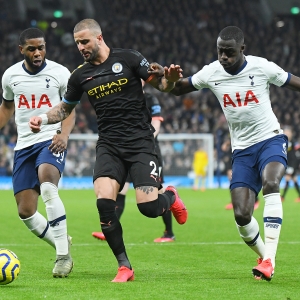In the Kit: Premier League Uniform Rules and Regulations

The Premier League, often hailed as the flagship of English football, captivates millions of fans worldwide with its exhilarating matches, top-class talent, and rich history. Established in 1992, the Premier League represents the highest tier of professional football in England and has since evolved into one of the most prestigious and lucrative football leagues on the planet. While the excitement on the pitch garners much attention, the league also adheres to strict rules and regulations regarding team uniforms. In this blog post, we look into the appealing world of Premier League team uniforms, exploring the guidelines that govern their design, display, and significance within the league.
Background on the Premier League
The Premier League emerged from a critical moment in English football history. In 1992, top clubs in England sought greater control over commercial rights and television revenues, leading to a breakaway from the Football League First Division. This move paved the way for the formation of the Premier League, marking a new era in English football. Since its inception, the league has grown exponentially, attracting global audiences, top talent, and substantial financial investments.
Why are team uniforms significant in the Premier League?
Team uniforms play a vital role in the identity and culture of football clubs. They serve as a visual representation of a club's heritage, values, and aspirations.
In the Premier League, where clubs compete at the highest level of the sport, uniforms hold even greater significance, symbolizing the unity and pride of players and supporters alike.
Premier League Uniform Rules and Regulations
The Premier League has established comprehensive rules and regulations governing team uniforms to ensure consistency, professionalism, and fairness across all clubs. These EPL uniform rules and regulations cover various aspects of kit design, sponsorship, and equipment, aiming to maintain the integrity and visual identity of each club while upholding league standards. Here are some key elements of the rules:
- Kit Supplier Contracts: Premier League clubs engage in contractual agreements with kit suppliers, delineating the design, production, and supply of uniforms. These contracts, often spanning multiple years, represent pivotal partnerships, underpinning the visual identity and commercial stature of each club.
- Design Guidelines: Kit designs must adhere to the Premier League uniform rules, reflecting the club's identity while complying with league regulations. Designs should incorporate club colors, crests, and other iconic elements, maintaining a cohesive and recognizable aesthetic.
Specific guidelines for each piece of clothing in a player's uniform include:
- Shirt: The primary shirt should prominently feature the club's primary colors, with the crest displayed prominently on the left chest area. Design elements such as stripes or solid colors should be consistent with the club's traditional aesthetic.
- Shorts: Shorts should complement the color scheme of the shirt and may feature the club crest or logo on one leg.
- Socks: Socks should provide sufficient contrast with the shirt and shorts while covering the shins adequately. The length and color coordination are essential for visibility and distinction on the field.
- Player Names and Numbers: Player names and numbers should be clear, legible, and consistent across all kits within the club. The font, size, and placement are standardized to facilitate easy identification of players during matches.
- Goalkeeper Kits: Goalkeeper kits often feature unique designs or color schemes to distinguish them from outfield players. They should provide sufficient contrast with outfield kits to avoid confusion, with visibility being a key consideration.
- Sponsorship Regulations: Clubs are permitted to showcase sponsor logos on uniforms, subject to league approval. However, regulations govern the size, placement, and type of sponsors, ensuring a delicate balance between commercial interests and the sanctity of the club's visual identity.
- Player Identification: Each player's uniform bears their name and a unique number, meticulously positioned for optimal visibility and identification during matches. Font, size, and placement adhere to standardized guidelines, facilitating seamless recognition on the field.
- Alternative Kits: Clubs may design alternative kits, such as away or third kits, to mitigate clashes with opposing teams' uniforms. These kits, while providing a creative canvas for innovation, must adhere to league regulations and embody the club's identity.
Premier League uniforms represent the relationship between tradition, identity, and professionalism. Through meticulous conformity to rules, regulations, and design guidelines, the league ensures a harmonious display of visual identity across its clubs, fostering a sense of pride, unity, and belonging among players and supporters. As the drama unfolds on the pitch, let us not overlook the profound symbolism embodied by the iconic colors and crests adorning the uniforms of our beloved clubs in the English Premier League.
Did you know?
English football and American football are different. What is known as English football is called soccer in the US.
Looking for Custom Soccer Uniforms?
Contact our team at Cisco Athletic for a FREE QUOTE so we can help gear up your team this season!

